
Operation Market Garden was an Allied military operation during the Second World War fought in the German-occupied Netherlands from 17 to 25 September 1944. Its objective was to create a 64 mi (103 km) salient into German territory with a bridgehead over the Nederrijn, creating an Allied invasion route into northern Germany. This was to be achieved by two sub-operations: seizing nine bridges with combined US and British airborne forces ("Market") followed by British land forces swiftly following over the bridges ("Garden").
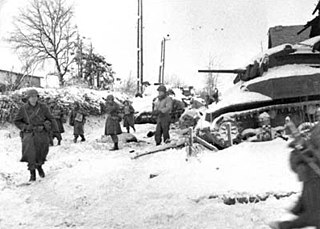
The Battle of the Bulge, also known as the Ardennes Offensive, was a major German offensive campaign on the Western Front during World War II which took place from 16 December 1944 to 25 January 1945. It was launched through the densely forested Ardennes region between Belgium and Luxembourg. The offensive was intended to stop Allied use of the Belgian port of Antwerp and to split the Allied lines, allowing the Germans to individually encircle and destroy the four Allied armies and force the western Allies to negotiate a peace treaty in the Axis powers' favor.

Remagen is a town in Germany in the state of Rhineland-Palatinate, in the district of Ahrweiler. It is about a one-hour drive from Cologne, just south of Bonn, the former West German seat of government. It is situated on the left (western) bank of the river Rhine. There is a ferry across the Rhine from Remagen every 10–15 minutes in the summer. Remagen has many notable and well-maintained buildings, churches, castles and monuments. It also has a sizeable pedestrian zone with plenty of shops.
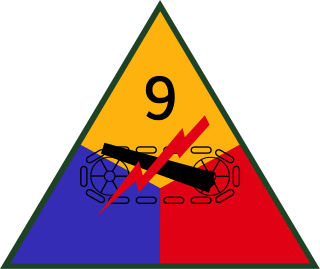
The 9th Armored Division was an armored division of the United States Army during World War II. In honor of their World War II service, the 9th was officially nicknamed the "Phantom Division."

The Western Front was a military theatre of World War II encompassing Denmark, Norway, Luxembourg, Belgium, the Netherlands, the United Kingdom, France, and Germany. The Italian front is considered a separate but related theatre. The Western Front's 1944–1945 phase was officially deemed the European Theater by the United States, whereas Italy fell under the Mediterranean Theater along with North Africa. The Western Front was marked by two phases of large-scale combat operations. The first phase saw the capitulation of Luxembourg, Netherlands, Belgium, and France during May and June 1940 after their defeat in the Low Countries and the northern half of France, and continued into an air war between Germany and Britain that climaxed with the Battle of Britain. The second phase consisted of large-scale ground combat, which began in June 1944 with the Allied landings in Normandy and continued until the defeat of Germany in May 1945 with its invasion.
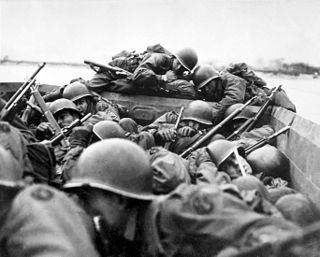
Operation Plunder was a military operation to cross the Rhine on the night of 23 March 1945, launched by the 21st Army Group under Field Marshal Bernard Montgomery. The crossing of the river was at Rees, Wesel, and south of the river Lippe by the British Second Army under Lieutenant General Miles Dempsey, and the United States Ninth Army under Lieutenant General William H. Simpson.
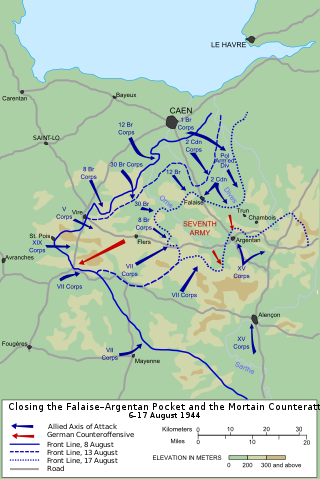
The Falaise pocket or battle of the Falaise pocket was the decisive engagement of the Battle of Normandy in the Second World War. Allied forces formed a pocket around Falaise, Calvados, in which German Army Group B, consisting of the 7th Army and the Fifth Panzer Army, were encircled by the Western Allies. The battle resulted in the destruction of most of Army Group B west of the Seine, which opened the way to Paris and the Franco-German border.

The Siegfried Line campaign was a phase in the Western European campaign of World War II, which involved actions near the German defensive Siegfried Line.

The Ruhr pocket was a battle of encirclement that took place in April 1945, on the Western Front near the end of World War II in Europe, in the Ruhr Area of Germany. Some 317,000 German troops were taken prisoner along with 24 generals. The Americans suffered 10,000 casualties including 2,000 killed or missing.

The 9th Panzer Division was a panzer division of the German Army during World War II. It came into existence after 4th Light Division was reorganized in January 1940. The division was headquartered in Vienna, in the German military district Wehrkreis XVII.

The Ludendorff Bridge was a bridge across the river Rhine in Germany which was captured by United States Army forces in early March 1945 during the Battle of Remagen, in the closing weeks of World War II, when it was one of the few remaining bridges in the region and therefore a critical strategic point. Built during World War I to help deliver reinforcements and supplies to German troops on the Western Front, it connected Remagen on the west bank and the village of Erpel on the east bank between two hills flanking the river.

The Colmar Pocket was the area held in central Alsace, France, by the German Nineteenth Army from November 1944 to February 1945, against the U.S. 6th Army Group during World War II. It was formed when 6th AG liberated southern and northern Alsace and adjacent eastern Lorraine, but could not clear central Alsace. During Operation Nordwind in December 1944, the 19th Army attacked north out of the Pocket in support of other German forces attacking south from the Saar into northern Alsace. In late January and early February 1945, the French First Army cleared the Pocket of German forces.

Operation Veritable was the northern part of an Allied pincer movement that took place between 8 February and 11 March 1945 during the final stages of the Second World War. The operation was conducted by Field Marshal Bernard Montgomery's Anglo-Canadian 21st Army Group, primarily consisting of the First Canadian Army under Lieutenant-General Harry Crerar and the British XXX Corps under Lieutenant-general Brian Horrocks.

The Western Allied invasion of Germany was coordinated by the Western Allies during the final months of hostilities in the European theatre of World War II. In preparation for the Allied invasion of Germany east of the Rhine, a series of offensive operations were designed to seize and capture its east and west banks: Operation Veritable and Operation Grenade in February 1945, and Operation Lumberjack and Operation Undertone in March 1945; these are considered separate from the main invasion operation. The Allied invasion of Germany east of the Rhine started with the Western Allies crossing the river on 22 March 1945 before fanning out and overrunning all of western Germany from the Baltic in the north to the Alpine passes in the south, where they linked up with troops of the U.S. Fifth Army in Italy. Combined with the capture of Berchtesgaden, any hope of Nazi leadership continuing to wage war from a so-called "national redoubt" or escape through the Alps was crushed, shortly followed by unconditional German surrender on 8 May 1945. This is known as the Central Europe Campaign in United States military histories.

The XX Corps of the United States Army fought from northern France to Austria in World War II. Constituted on 10 October 1943 by re-designating the IV Armored Corps of the Army Ground Forces, a training organization which had been activated at Camp Young, California on 5 September 1942, XX Corps became operational in France as part of Lieutenant General George S. Patton's U.S. Third Army on 1 August 1944.
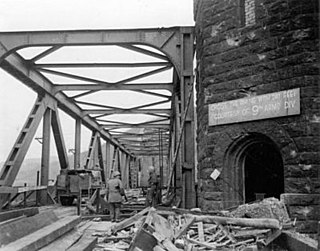
The Battle of Remagen was an 18-day battle during the Allied invasion of Germany in World War II. It lasted from 7 to 25 March 1945 when American forces unexpectedly captured the Ludendorff Bridge over the Rhine intact. They were able to hold it against German opposition and build additional temporary crossings. The presence of a bridgehead across the Rhine advanced by three weeks the Western Allies' planned crossing of the Rhine into the German interior.

Major General Roderick Random Allen was a senior United States Army officer, who commanded the 20th and 12th Armored Divisions during World War II. Under his command of the 12th AD, the division defended Strasbourg from recapture; it provided the armored contingent in the closure of the Colmar Pocket and the liberation of Colmar; it spearheaded General George Patton's drive to the Rhine; captured intact the remaining bridge over the Danube River and broke the German defense line; and played a major part in blocking the Brenner Pass, thereby trapping over a million German soldiers in Italy as the war ended. En route to the Brenner Pass it overran eleven concentration camps at Landsberg, Germany.
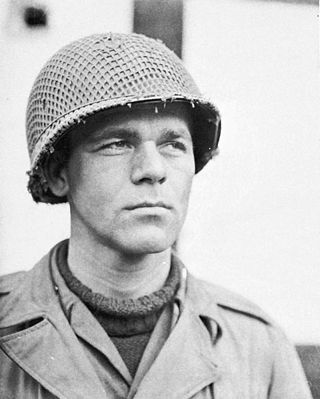
Karl Heinrich Timmermann was an American soldier and army officer.

Major General John Millikin was a senior United States Army officer who served in both World War I and World War II. During the latter, Millikin commanded III Corps in General George S. Patton's U.S. Third Army during the Battle of the Bulge in December 1944.

The Battle of Cologne was part of Operation Lumberjack and refers to the Allied advance that took place from 5 to 7 March 1945, which led to the capture of the western German city of Cologne.























